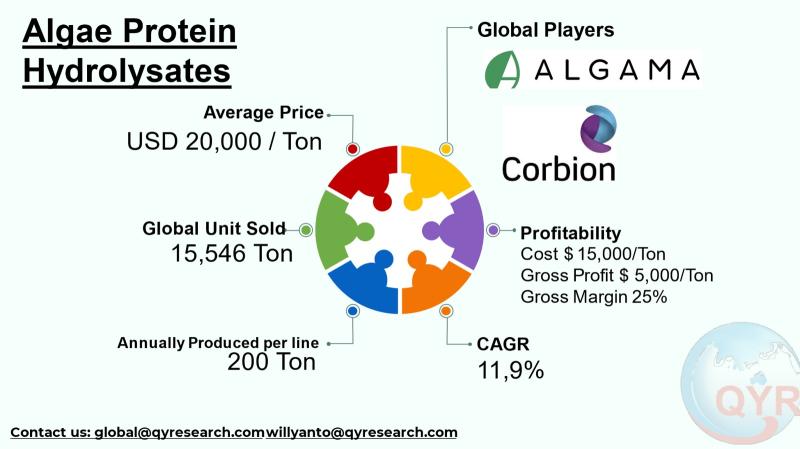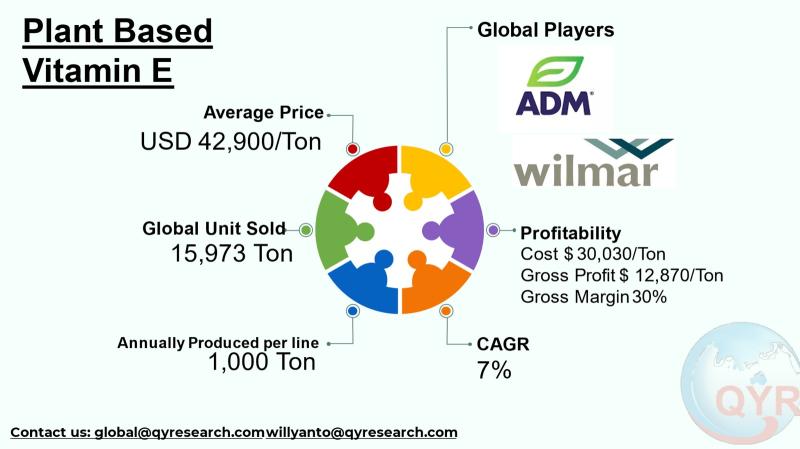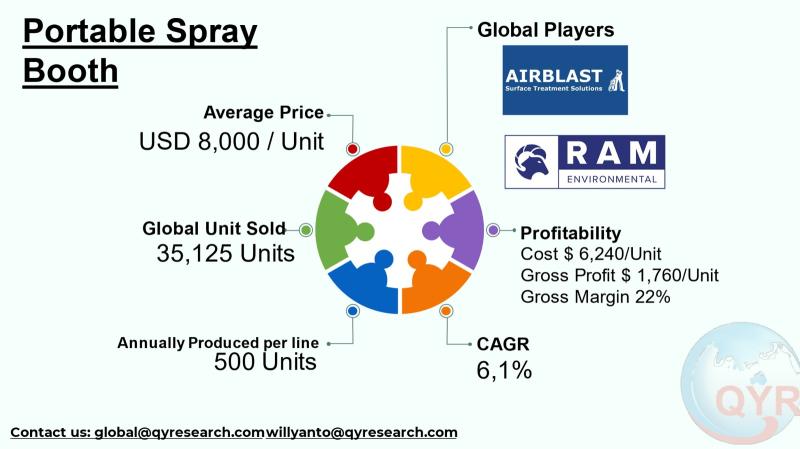Press release
Semiconductor Based Water Filtration System Market to Reach CAGR 11,20% by 2031 Top 10 Company Globally
Semiconductorbased water filtration systems are advanced purification solutions incorporating semiconductor materials such as siliconbased membranes, ceramic chips, and nanoscale filters to achieve ultra-high water purity levels. These systems are critical in semiconductor fabs, advanced electronics manufacturing, biopharma, and laboratories, where contamination control is paramount. The unique properties of semiconductor-derived filtration surfaces precision pore size, chemical inertness, and electrical conductivity enable finer filtration and longer lifetimes than conventional membranes.In 2024, the semiconductorbased water filtration market was estimated at USD 860 million, with expansion anticipated to reach between USD 1.794 million by 2031. This translates to a CAGR of 11,2% between 2024 and 2031. Reflecting broader demand in semiconductors and life sciences Asia-Pacific held ~39.8% share in this segment.
.
Latest Trends and Technological Developments
In February 2025, Verified Market Reports reaffirmed growth of the semiconductor water filter market to USD 3.2 billion by 2033 at 9.4% CAGR, driven by escalating semiconductor manufacturing expansion and environmental compliance needs. In mid-2024, Asia-Pacific led by China, Taiwan, Korea, and India emerged as the fastest-growing regional market with ~34% share, due to fab construction and higher ultrapure water requirements. Concurrently, fabricators like TSMC in Taiwan announced investments in water recycling and treatment systems reclaiming over 85% of processing water reflecting tightening environmental standards and reliance on stable water supply. Finally, innovations in nanoporous MoS2 and graphene-based membranes reported in late 2023 promise ultrafast filtration with high ion rejection potentially scalable to semiconductor-grade water systems.
Asia-Pacific leads adoption in semiconductor-grade filtration systems, contributing approximately 3440% of global revenue in 2024 for both semiconductor-specific filters and ultrapure water systems. This dominance reflects Asias semiconductor cluster expansion including major fabs in China, Taiwan, Japan, and South Korea as well as growth in biopharma and electronics manufacturing. The rapid fab build-out requires advanced filtration to meet 18 MΩ·cm resistivity standards, especially in chip cleaning steps. Taiwan's TSMC fab network, consuming up to 150,000 tons of water daily, exemplifies scale pressure on water systems and motivates adoption of high-efficiency semiconductor filter platforms.
Get Full PDF Sample Copy of Report: (Including Full TOC, List of Tables & Figures, Chart)
https://www.qyresearch.com/sample/4800660
Semiconductor-Based Water Filtration System by Type:
Semiconductor Based Membrane Technology
Electrochemical Filtration
Photoctalytic Filtration
Others
Semiconductor-Based Water Filtration System by Application:
Industrial Water Treatment
Municipal Water Treatment
Wastewater Treatment
Desalination
Others
Global Top 10 Key Companies in the Semiconductor-Based Water Filtration System Market
Toray Industries, Inc
Gradiant Corporation
Puralytics Inc.
Memsift Innovations Pte Ltd
Organo Corporation
Danaher Corporation
Kurita Water Industries
Membrion Inc
Jiangsu Jiuwu Hi-Tech Co., Ltd.
Guangzhou Olansi Healthcare Co., Ltd.
Regional Insights
In Southeast Asia comprising Thailand, Indonesia, Malaysia, Vietnam, and the Philippines deployment is growing from a smaller base. In 2024, regional revenue for semiconductor-grade filtration systems likely reached USD 120-150 million, with ~3,000-4,000 units installed, growing at an expected 12-14% CAGR. Growth is fueled by rising semiconductor assembly, packaging, and test facilities (often in Malaysia and the Philippines), as well as new biopharma and cleanroom installations. However, limited local manufacturing and dependency on imports remain key constraints in cost-sensitive markets.
Semiconductor-Based Water Filtration System by Region:
North America
Europe
China
Japan
India
South East Asia
Despite growth, challenges persist: semiconductor-grade filters command high initial cost, creating barriers in smaller fab and lab installations. Supply chain complexity especially for purifiers using exotic semiconducting membranes adds cost and calibration difficulty. Rapid technological evolution in fabs demands frequent filter validation and replacement. Environmental concerns around water recycling vs. ultrapure water consumption also pressure operational economics. Southeast Asia must build local technical service and certification capacity to support growing demand.
Manufacturers and filtration firms should consider establishing localized production or assembly hubs in Southeast Asia to reduce costs and lead times. Partnerships with semiconductor foundries, biopharma producers, and water utilities can bundle water treatment with fab design or cleanroom installations. Integrating IoT-enabled sensors and real-time quality diagnostics can increase operational efficiency and reduce downtime. Collaborating on R&D for next-generation nanofiltration membranes including MoS2 and graphene composites differentiates technological leadership. Public-private collaboration on water reuse and sustainability frameworks supports regulation alignment and customer trust.
Product Models
Semiconductor-based water filtration systems utilize advanced materials and nanotechnologies to purify water through highly efficient, selective, and often energy-conscious processes. These systems are emerging as next-generation solutions for removing contaminants, heavy metals, pathogens, and organic compounds from wastewater, industrial runoff, and drinking water supplies.
Semiconductor Based Membrane Technology which uses nano-structured membranes for selective separation. Notable products include:
Atech SiC Membrane Filter: Offers high permeability and temperature resistance, suitable for food and beverage water recycling.
METAWATER SiC Membrane: Semiconductor ceramic filter module for large-scale municipal water treatment facilities.
CoorsTek PureSiC Membrane: Uses advanced semiconductor-grade SiC to filter fine particles and bacteria from process water.
Inopor SiC Membrane System: A German-engineered membrane system for chemical and semiconductor rinse water recycling.
Hefei OriginWater SiC Membrane Module: China's market leader in advanced membrane systems for wastewater treatment.
Electrochemical Filtration which employs semiconductor electrodes to oxidize or reduce pollutants. Examples include:
BioLargo AOS (Advanced Oxidation System): Uses electrochemical semiconductor surfaces to treat municipal and industrial water using low energy and high efficiency.
Saltworks FlexEDR Stack: Modular electro-deionization system using semiconductor coatings for brine and desalination water reuse.
Axine Water Technologies EC Reactor: Semiconductor-driven electrochemical system targeting pharmaceutical and toxic organics in industrial wastewater.
Ovivo Electro-Deionization (EDI) Cell: High-performance EDI with semiconductor-enhanced conductivity for power plant and electronics water systems.
Photocatalytic Filtration which uses light-activated semiconductors to degrade organic and biological contaminants. Products examples include:
Nitto Denko TiO2 Filter Module: A photocatalytic membrane system that uses titanium dioxide semiconductor to decompose organic compounds with UV light.
AquaShield UV-TiO2 Reactor: Designed for small community water systems, this device neutralizes pathogens and VOCs via semiconductor photocatalysis.
Panasonic Photocatalytic Ceramic Filter: Uses embedded TiO2 and LED light to break down bacteria and odors in residential filtration.
Purifics Photo-Cat Reactor: Advanced AOP (advanced oxidation process) using semiconductor photocatalysts to treat industrial organics.
Wuhan Advanced TiO2 Photocatalytic Panel: Photocatalytic plates used for integrating into rainwater and graywater treatment systems.
The global semiconductor-based water filtration market, valued at USD 860 million in 2024, is projected to grow to between USD 1,794 million by 2031, at a CAGR of approximately 11.2%. Asia-Pacific leads in demand and revenue share 35%, fueled by fab expansion and regulatory pressure, while Southeast Asia is an emerging frontier with 14% CAGR. Technological innovation in nanofiltration membranes and fab-grade recycling systems, coupled with water scarcity imperatives, underpin the sectors long-term relevance and growth.
Investor Analysis
Semiconductor-based water filtration is a niche and high-value subset of purified water systems USD 860 million in 2024 growing at 11.2% annually, critical for semiconductor, biotech, and high-tech manufacturing.
Investors can support filter manufacturers expanding fabrication or assembly in ASEAN, fund startups pioneering graphene or MoS2 membranes, or invest in service providers offering maintenance contracts to fabs. Infrastructure-related consortiums in Taiwan or Malaysia offer strategic entry points.
As semiconductor demand scales globally especially in Asia the need for ultrapure, contaminationfree water is non-negotiable. Early investment in membrane innovation, regional supply chains, and water recycling infrastructure provides both commercial returns and ESG alignment in tech-critical domains.
Request for Pre-Order Enquiry On This Report
https://www.qyresearch.com/customize/4800660
5 Reasons to Buy This Report
Clear segmentation of semiconductor-grade filtration within the broader ultrapure water market using 20242031 forecasts.
Regional insights on AsiaPacific dominance and emerging Southeast Asia growth drivers.
Technology trends like MoS2 and graphene membranes mapped against pure water system deployment.
ASP and total unit shipment data for investment modeling and procurement analysis.
Strategic roadmap for suppliers, fabs, and infrastructure planners seeking partnership and localization rationale.
5 Key Questions Answered
What was the global market size and ASP for semiconductor-based water filtration in 2024?
What are the CAGR and forecast revenue by 2031-2033?
How are Asia-Pacific and Southeast Asia positioned in terms of demand, capacity, and growth?
What recent technological and regulatory developments are influencing adoption?
Who are the leading players and what regional strategies warrant attention?
Chapter Outline
Chapter 1: Introduces the report scope of the report, executive summary of different market segments (by region, product type, application, etc), including the market size of each market segment, future development potential, and so on. It offers a high-level view of the current state of the market and its likely evolution in the short to mid-term, and long term.
Chapter 2: key insights, key emerging trends, etc.
Chapter 3: Manufacturers competitive analysis, detailed analysis of the product manufacturers competitive landscape, price, sales and revenue market share, latest development plan, merger, and acquisition information, etc.
Chapter 4: Provides profiles of key players, introducing the basic situation of the main companies in the market in detail, including product sales, revenue, price, gross margin, product introduction, recent development, etc.
Chapter 5 & 6: Sales, revenue of the product in regional level and country level. It provides a quantitative analysis of the market size and development potential of each region and its main countries and introduces the market development, future development prospects, market space, and market size of each country in the world.
Chapter 7: Provides the analysis of various market segments by Type, covering the market size and development potential of each market segment, to help readers find the blue ocean market in different market segments.
Chapter 8: Provides the analysis of various market segments by Application, covering the market size and development potential of each market segment, to help readers find the blue ocean market in different downstream markets.
Chapter 9: Analysis of industrial chain, including the upstream and downstream of the industry.
Chapter 10: The main points and conclusions of the report.
Tel: +1 626 2952 442 (US) ; +86-1082945717 (China)
+62 896 3769 3166 (Whatsapp)
Email: willyanto@qyresearch.com; global@qyresearch.com
Website: www.qyresearch.com
QY Research has established close partnerships with over 71,000 global leading players. With more than 20,000 industry experts worldwide, we maintain a strong global network to efficiently gather insights and raw data.
Our 36-step verification system ensures the reliability and quality of our data. With over 2 million reports, we have become the world's largest market report vendor. Our global database spans more than 2,000 sources and covers data from most countries, including import and export details.
We have partners in over 160 countries, providing comprehensive coverage of both sales and research networks. A 90% client return rate and long-term cooperation with key partners demonstrate the high level of service and quality QY Research delivers.
More than 30 IPOs and over 5,000 global media outlets and major corporations have used our data, solidifying QY Research as a global leader in data supply. We are committed to delivering services that exceed both client and societal expectations.
This release was published on openPR.
Permanent link to this press release:
Copy
Please set a link in the press area of your homepage to this press release on openPR. openPR disclaims liability for any content contained in this release.
You can edit or delete your press release Semiconductor Based Water Filtration System Market to Reach CAGR 11,20% by 2031 Top 10 Company Globally here
News-ID: 4132443 • Views: …
More Releases from QY Research

Premium Proteins at Scale: The Technologies, Trends, and Players Transforming th …
Algae protein hydrolysates are specialty protein ingredients produced by breaking down algae-derived proteins into shorter peptides and amino acids through enzymatic, chemical, or thermal hydrolysis processes. These ingredients are prized for their high digestibility, concentrated amino acid profiles, and functional properties that suit nutraceuticals, specialized foods, animal feed, cosmetics and agricultural biostimulants. Producers and buyers view algae protein hydrolysates both as a sustainable alternative to conventional protein hydrolysates and as…

Plant-Based Vitamin E Market Poised for 7% CAGR: Asia-Pacific and ASEAN Lead the …
The global market for plantbased Vitamin E has garnered increasing attention as consumers worldwide shift toward clean-label, natural, and plant-derived nutrients. With rising health consciousness, demand for natural antioxidants especially for supplements, fortified foods, cosmetics, and functional beverages continues to climb. This report provides a comprehensive analysis of the global plantbased Vitamin E industry, with special emphasis on Asia and Southeast Asia, exploring market size, pricing, cost structure, production capacity,…

Portable Spray Booth Market Set to Soar: Asia and ASEAN Drive Innovation, IoT Ad …
The portable spray booth market serves a wide spectrum of users from small automotive repair shops and furniture finishers to large industrial contractors seeking on-demand finishing capacity without the investment and footprint of permanent booths. Portable booths range from tabletop and tent/frame systems for hobbyists and small shops to inflatable and modular containerized systems used on-site for larger equipment. These solutions are prized for lower capital cost, rapid deployment, and…
Top 30 Indonesian Public Companies Q3 2025 Revenue & Performance
1) Sector overview overall performance (Q3 2025 snapshot)
Q3 2025 in Indonesias listed energy sector was dominated by coal-price weakness (Newcastle / ICI indexes down vs the prior year) and mixed operational results across miners and oil & gas firms. Several large coal miners and integrated groups recorded lower year-on-year net results in Q3 and for 9M25 as ASP (average selling prices) softened; however, some companies reported improved production volumes…
More Releases for Asia
Asia Private Equity Firm, Asia Private Equity Management, Asia Private Equity Se …
The private equity market in China has been rapidly growing in recent years. Private equity (PE) refers to the purchase of shares in a company that are not publicly traded on a stock exchange. PE firms typically target companies that are undervalued or in need of capital for growth, and aim to improve the company's operations and financial performance before selling it at a higher value.
https://boomingfaucet.com/
Asia Private Equity Consulting
E-mail:nolan@pandacuads.com
In China,…
South East Asia Business Jet Market And Top Key Players are Asia Corporate Jet, …
By 2022, the South East Asia Business Jet Markets estimated to reach US$ XX Mn, up from US$ XX Mn in 2016, growing at a CAGR of XX% during the forecast period. The Global Business Jet Market, currently at 21 million USD, contributes the highest share in the market and is poised to grow at the fastest rate in the future. The three broad categories of business jets are Small,…
LIXIL Asia Presents Asia Pacific Property Awards
Through its power brands GROHE and American Standard, LIXIL Asia signs a three-year deal to become the Headline Sponsor of the Asia Pacific Property Awards from 2019 until 2022.
23rd January 2019: The International Property Awards, first established in 1993, are open to residential and commercial property professionals from around the globe. They celebrate the highest levels of achievement by companies operating within the architecture, interior design, real estate and property…
PEOPLEWAVE WINS ASIA TECH PODCAST PITCHDECK ASIA 2019 AWARDS
15 January 2019, Singapore – Peoplewave, Asia’s leading data-driven HR technology company, won the Asia Tech Podcast (ATP) Pitchdeck Asia 2019 Awards, being awarded “Startup Most Likely to Succeed in 2019".
The 2019 Pitchdeck Asia Awards is an opportunity for the Asian Startup Ecosystem to shine a spotlight on some of its best startups. The awards were decided by a public vote. More than 7,200 votes were cast by registered LinkedIn…
Undersea Defence Technology Asia, UDT Asia 2011
Latest Military Diving Technologies featured in UDT Asia
Equipping Asia’s navies with the latest diving technology for asymmetric warfare and
operations
SINGAPORE, 17 October 2011 - Naval diving and underwater special operations is a field that is
seeing increased attention and investment amongst navies in Asia. Units such as the Indonesian Navy‟s KOPASKA, the Republic of Singapore Navy‟s Naval Diving Unit (NDU), the Royal Malaysian Navy‟s PASKAL are increasingly utilising specialised equipment for conducting…
Asia Diligence – Specialist Investigative Due Diligence for Asia & Beyond
Asia Diligence today announced the opening of its European Customer Services office in the United Kingdom. The office is to be managed by Steve Fowler and will focus on providing services to Asia Diligence’s European customers. Asia Diligence is also planning to open a US office in the near future, which will provide customer service to its US and North American clients.
Asked to comment on the move, Luke Palmer, the…
